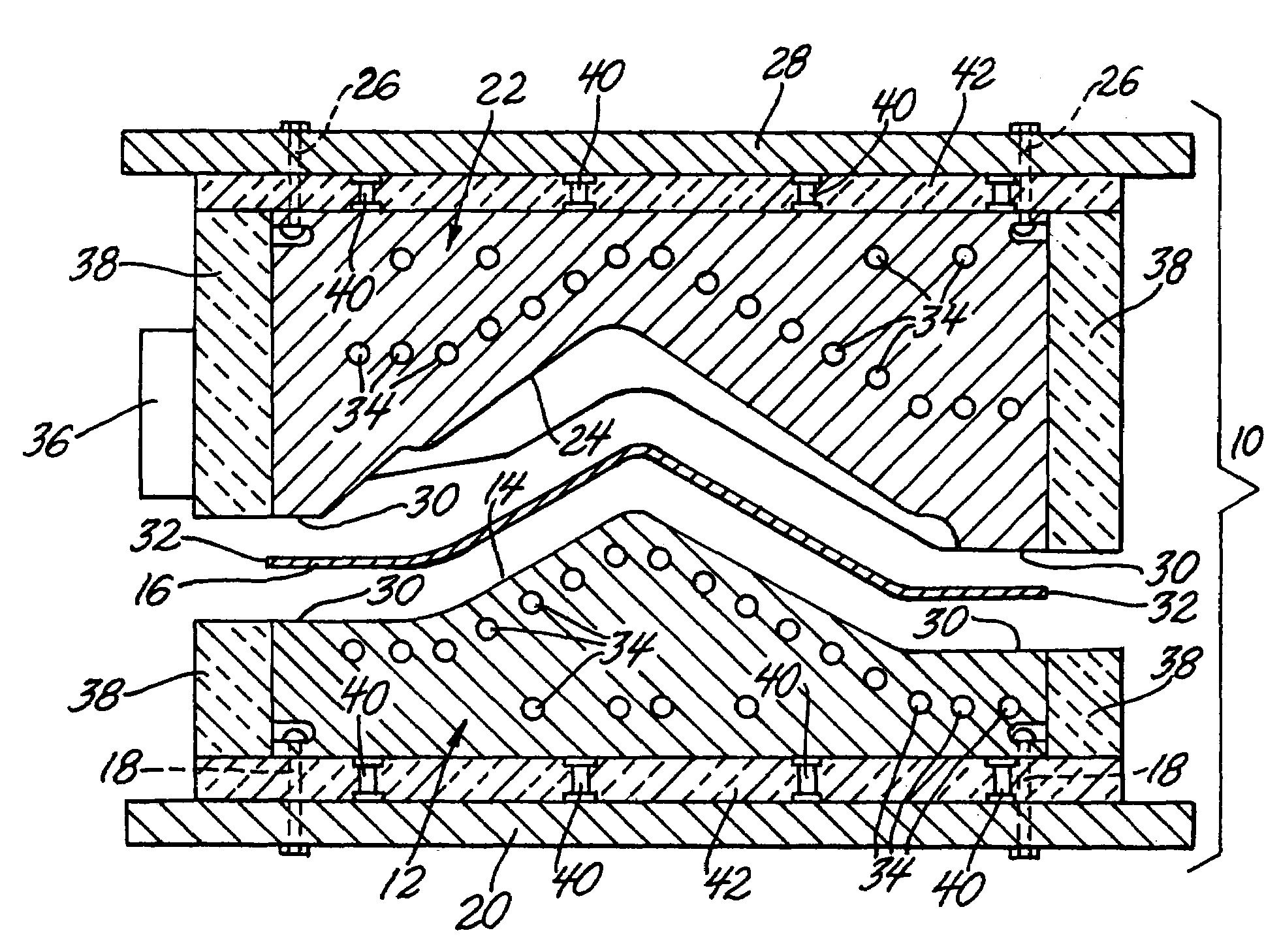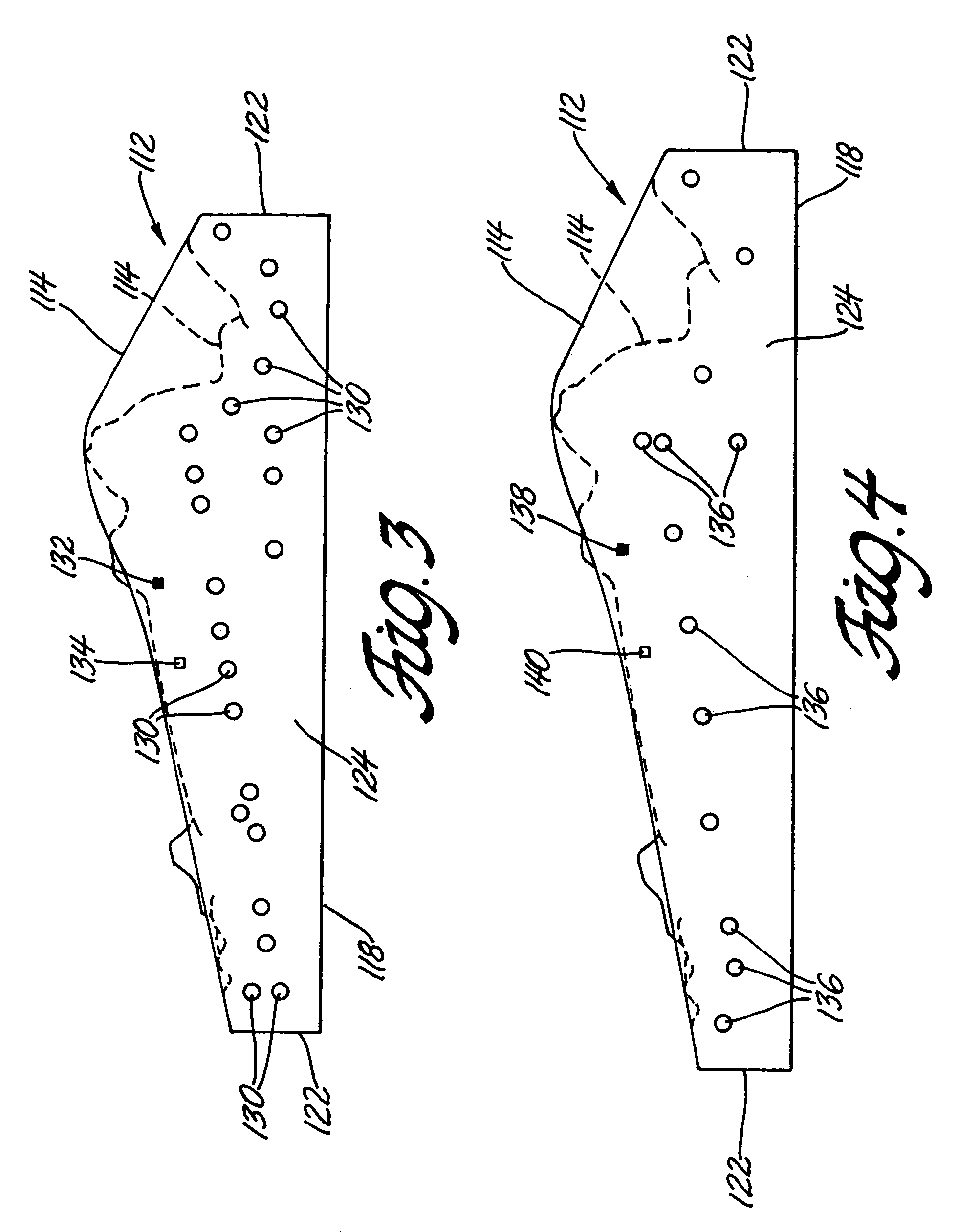Heated die for hot forming
a technology of heat treatment and dies, which is applied in the direction of manufacturing tools, cutting tools, shaping tools, etc., can solve the problems of cumbersome and expensive use of many separate powered and controlled heating cartridges, particularly in the design and operation of forming tools, and achieve simple power and control, reduce the cost of parts made, and increase the productivity of tools
- Summary
- Abstract
- Description
- Claims
- Application Information
AI Technical Summary
Benefits of technology
Problems solved by technology
Method used
Image
Examples
Embodiment Construction
[0018]U.S. Pat. No. 6,253,588 to Rashid et al, and assigned to the assignee of this invention, describes Quick Plastic Forming of Aluminum Alloy Sheet Material. In Quick Plastic Forming (QPF), a blank of superplastic aluminum alloy is heated to the forming temperature and stretched by air pressure against a forming tool to make an aluminum body panel. QPF is a hot stretch forming process, or hot blow forming process like superplastic forming. However, QPF is practiced at a lower temperature and higher strain rates where deformation mechanisms of grain-boundary sliding and solute-drag creep both contribute to material deformation, and total elongations are somewhat less than those obtained for true superplastic behavior. This invention provides improved internally heated forming dies or tools for QPF and other hot forming or molding processes for materials.
[0019]Challenges in making internally heated forming dies for automotive body panels arise from the size of the panels (typically...
PUM
| Property | Measurement | Unit |
|---|---|---|
| temperatures | aaaaa | aaaaa |
| temperatures | aaaaa | aaaaa |
| size | aaaaa | aaaaa |
Abstract
Description
Claims
Application Information
 Login to View More
Login to View More - R&D
- Intellectual Property
- Life Sciences
- Materials
- Tech Scout
- Unparalleled Data Quality
- Higher Quality Content
- 60% Fewer Hallucinations
Browse by: Latest US Patents, China's latest patents, Technical Efficacy Thesaurus, Application Domain, Technology Topic, Popular Technical Reports.
© 2025 PatSnap. All rights reserved.Legal|Privacy policy|Modern Slavery Act Transparency Statement|Sitemap|About US| Contact US: help@patsnap.com



